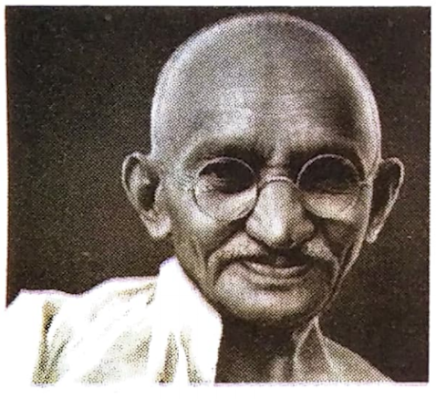Chapter 8 -
I Love My Country
Activities
a) Let's check our understanding:
(a) Bhogeswari Phukanani was a
(i) freedom fighter
(ii) martyr
(iii) freedom fighter and martyr
(iv) volunteer
Ans: (iii) freedom fighter and martyr
(b) Bhogeswari Phukanani lived a peaceful life till the age of -
(i) Sixty
(ii) fifty
(iii) sixteen
(iv) sixty one
Ans: sixty one
(c) The Quit India Movement started under the leadership of -
(i) Bhogeswari Phukanani
(ii) Mahatma Gandhi
(iii) Volunteers of Barhampur
(iv) Pratap Chandra Sharma
Ans: (ii) Mahatma Gandhi
(d) Bhogeswari Phukanani died on -
(i) September 20,1943
(ii) September 18,1942
(iii) September 16,1942
(iv) September 20, 1942
Ans:(iv) September 20, 1942
2. Rearrange the following sentences about the lesson in the proper sequence taking the help of information form the lesson .
a) Bhogeswari Phukanani inspired many people to join the protest rally at Barhampur.
b) When he recovered , he shot her with his pistol from a close range and she died .
c) She soon became the leader of the women's wing of the movement in Barhampur .
d) When thousands joined the Quit India Movement in 1942,Bhogeswari Phukanani could not remain idle.
e) Bhogeswari Phukanani started beating the officer with the pole of her flag .
f) Bhogeswari Phukanani was leading a peaceful family life with six sons and two daughters.
g) At the rally, a British officer tried to take away the flag from Ratnamala forcefully.
Ans: Bhogeswari Phukanani was leading a peaceful family life with six sons and two daughters.
When thousands joined the Quit India movement in 1942 , Bhogeswari Phukanani could not remain idle.
She soon became the leader of the women's wing of the movement in Barhampur .
Bhogeswari Phukanani inspired many people to join the protest rally at Barhampur .
At the rally , a British officer tried to take away the flag from Ratnamala forcefully .
Bhogeswari Phukanani started beating the officer with the pole of her flag.
When he recovered , he shot her with his pistol from a close range and she died .
3. (a) Here are the meanings of some new words you read in the lesson:
martyr: one who dies or suffers greatly for great cause
rally: a large public meeting
disperse: to move apart and go away in different directions
(b) Fill in blanks to check your understanding:
(i) A rally was organised in protest against British rule.
(ii) The police dispersed the crowd.
(iii) Bhogeswari Phukanani was a freedom fighter and she died a martyr's death.
4. Now look at the dictionary to find out the meanings of the following words. write them in the space given:
Ban: Officially or legally prohibit something
Calm: not showing strong emotions
Lap: the flat area between the waist and knees of a seated person .
Unconscious: Not aware
5. Look at the pictures . They are all freedom fighters . Can you match their with the pictures ? Now say a few sentences about a freedom fighter that you Know:
 |
| Mohandas Karamchand Gandhi |
 |
Sarojini Naidu |
 |
| Kushal Konwar |
Ans:- Kushal Konwar was an Indian Assamese freedom fingter who was hanged by British. He was born on march 21st, 1905, in Jorhat. During the QUit Indian Movement konwar was charged at consperacy and train subotage by British and hanged. Kushal Konwar was a brave son of soil of Assam.
6. Listen to your teacher read and tell you more about our freedom fighters. As you listen , fill in the blanks in the sentences: Complete the following sentences by noting the correct words as you listen:
(a) Kanaklata Barua was an Indian freedom fighter form Assam .
(b) The Quit India Movement started in 19 42 .
(c) Kushal Konwar was a freedom fighter.
(d) Mohandas Karamchand Ganddhi is better known as Bapu .
(e) Bhagat Singh is often referred to as Shahid Bhagat Singh .
(f) Sarojini naidu was a nationalist and freedom fighter .
7. Let's read to know some interesting events of Gandhiji's life .
O Gandhiji went to South Africa to practise law. But soon he found his practice disgusting. He then decided to work for the common people. He led a very simple life. He used to wash his own clothes and do other household chores with his wife, Kasturba. They washed dishes and even cleaned their own toilets themselves. Many Indian and European guests used to come to their house. The new guests did not know about their system and so sometimes Kasturba had to clean toilets for their guests. One day she said, "Why should I clean the toilets of others? I hate doing it." "Are you sure you won't do it? I'll do it then," said Gandhi. Tears rolled down from Kasturba's eyes. She realized her fault.
O Gandhiji always wanted to do something good. Once a leper came to his door. He offered him shelter, dressed his wounds, and began to look after him. Later on, he sent him to a hospital. Gandhiji used to work a few hours in a hospital daily. It brought him to a close touch with the suffering Indians. Most of them were labourer. This experience inspired Gandhji to work for the common people in India.
Work in groups and try to collect information of other freedom fighters . Share the interesting events or incidents with other groups.
8. (a) Some of the words in the passage are missing . Read the passage carefully and complete it with suitable words from the box:
freedom, brave, love, won, pride, work, rule, sacrificed
Once India was under the rule of the British. Many brave men and women fought for its freedom . Some of them even sacrificed their lives. They did this out of their love for the country. The freedom of our country was won after a lot of hard work and sacrifice. We should take pride in their sacrifice. Freedom is precious.
(b) Now, think and write how you can show your love for your country:
Ans: (i) Frist, we should respect our country.
(ii) We should respect our fighters who protects us from other country.
(iii) We should stay nicely with our country people.
(iv) We should not do such thing which can harm our nation.
(v) We should learn from our past freedom fighters.
10. Let's practise some grammar.
Work in groups. Read the lesson quickly once more and find words that describe Bhogeswari Phukanani, such as `freedom fighter' and `noble'. Then put all the words in the columns below. One has been done for you.
Nouns | Adjectives | Verbs |
Freedom fighter Martyr Freedom British officer | Noble Peaceful Eagerly disperse | Fought Living Inspiring Gather |
11. What do you learn from Activity 10? Word classes like nouns, adjectives, verbs and adverbs are words that carry the meaning of a sentence. Word classes like prepositions, articles or conjunctions support the words that carry meaning. Now let us look at a few more adjectives. Let us look at the uses of few and little in these sentences:
(a) We use few before a countable noun to mean there is hardly any number of something and little to mean there is hardly any amount of something.
(i) There are few girls in the class.
(ii) I have little time to spare as I am very busy.
(b) We use a few to mean a small number of something and a little to mean a small amount of something.
(i) There are a few books on the table.
(ii) There is a little milk in the cup, you can take it.
(c) We use the few to refer to whatever number of something is there and the little to refer to whatever amount of something is there.
(i) I rely on the few friends I have.
(ii) The little water in the bucket is muddy. sm.
Fill in the blanks with few, a few, the few, little, a little or the little:
খালী ঠাই পূৰ কৰা এইকেইতা ব্যৱহাৰ কৰি ঃ
(i) There is a little milk in the pot; it should be enough for your cup of tea.
(ii) I have little time for a cup of tea; I have to rush back to office.
(iii) I bought a few books from the book fair. I wanted to buy more, but I did not have enough money.
(iv) The train stopped for a few minutes, so I managed to go out and buy a bottle of water.
(v) There were a few boys in the room; it was mostly filled with girls.
12. Read the following paragraph.
পেৰাগ্ৰাফ টো পঢ়া ঃ
When Bhogeswari Phukanani led the crowd of freedom fighters at the public rally, the people were carrying flags in their hands. The organizers had asked everyone to bring flags. Many volunteers brought some extra flags to the rally.
Talk to your friend and find out the colours of our National Flag. Do you know what the different colours of the national tricolour stand for?
Ask your elders and learn more about our National Flag.
13. Fun Time
• Use chart paper, colour pencils, glue and sticks and make your national flag.
• Take out a class rally in your playground with one of you playing the role of Bhogeswari Phukanani. The rest can be the other freedom fighters who joined the rally.
14. Recite:
My Land
She is a rich and rare land:
Oh! she's a fresh and fair land;
She is a dear and rare land
This native land of mine
No men than hers are braver
Her women's hearts ne'er waver;
I'd freely die to save her
And think my lot divin







